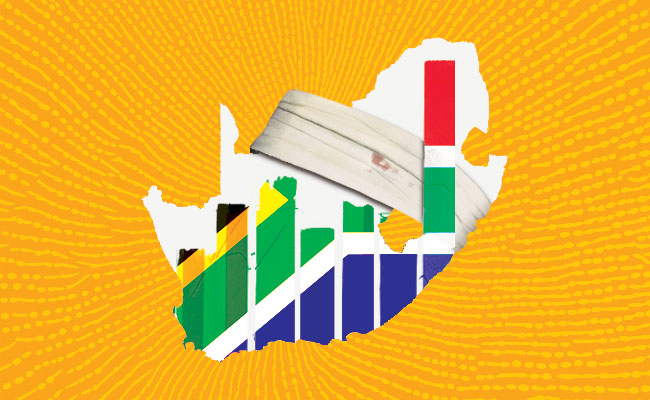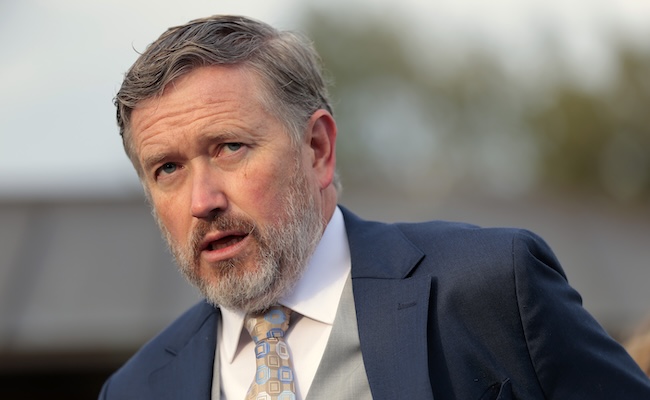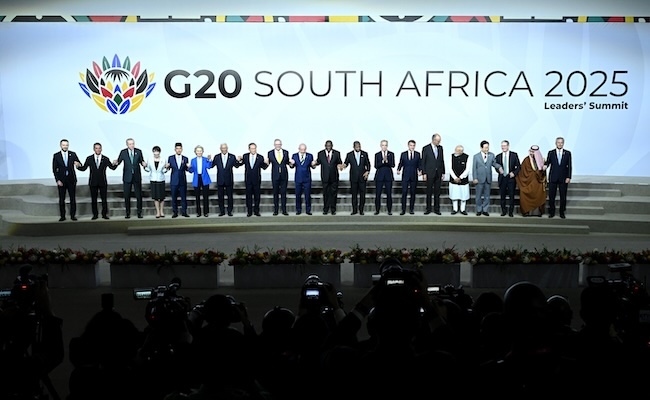The odd thing about fake news is that it has just gotten very real and may require something more than the loose appraisal that has been devoted to it so far.
The incident that is fabulously demonstrative of the world in 2025, in all its seriousness and its silliness, was the tariff pause rally that happened last week.
On April 8, a pseudonymous X account called Walter Bloomberg, which has no relation to Bloomberg News or its owner Michael Bloomberg, posted a tweet saying:
“HASSETT: TRUMP IS CONSIDERING A 90-DAY PAUSE IN TARIFFS FOR ALL COUNTRIES EXCEPT CHINA.”
This claim was a misinterpretation of a Fox News interview with Kevin Hassett, director of the White House National Economic Council. In the interview, Hassett gave a noncommittal response regarding a potential tariff pause, stating: “I think the president is going to decide what the president is going to decide.”
Walter Bloomberg has more than 900,000 followers on X and he wasn’t actually even the first person to draw that false conclusion. But the sheer size of his following meant the misleading tweet quickly gained traction and was amplified by other social media accounts. And then picked up by major news outlets like CNBC and Reuters. (The news reports now follow tweets rather than preceding them, overturning the old news-flow process.)
This news led to a dramatic market reaction: the S&P 500 surged, adding approximately $2.4-trillion in market value within 10 minutes. However, once the White House denied the report, labelling it “fake news”, the market reversed course, erasing those gains. The whole incident from start to finish lasted 23 minutes.
And then, of course, because fiction in the modern era is too often indistinguishable from reality, President Donald Trump did in fact issue a 90-day suspension of the newly imposed “reciprocal tariffs” the very next day, on April 9.
And there is the irony: one of the two people who was instrumental in persuading Trump to enact the pause was, you guessed it, Hassett. The other was treasury secretary Scott Bessent, who suggested providing a window for negotiating more favourable trade deals.
Fast-moving falsity
So what happened here? We don’t know. It’s possible that Hassett actually did want a pause in the tariffs and consequently didn’t quash the question with sufficient vigour. It’s possible the market reaction to the fake news incident encouraged Trump and his advisers that this was, oddly enough, the right course of action.
But the incident illustrates the new global reality that has been discussed and argued over and disputed exhaustively: falsity is moving faster in the modern day than ever before. That much is obvious.
But this is new in two respects. First, the sheer power of fake news has never been seen before. A $2-trillion swing in market value has never happened before in these circumstance. Of course, the markets have lost a lot of value quickly after national calamities have been revealed, like Brexit and Covid. But this happened on the basis of fake news, not actual news.
The closest comparator was the flash crash on May 6 2010, when the Dow plunged nearly 1,000 points – about 9% – within minutes, temporarily erasing approximately $1-trillion in market value. This event was triggered by a large sell order combined with high-frequency trading algorithms, leading to a rapid decline and recovery.
As a result the use of market “circuit breakers” – which temporarily suspend trading in individual stocks or across the entire market when volatility gets extreme – expanded. In addition, limit up-limit down mechanisms were introduced, which prevent trades in individual stocks from occurring outside a specified price band.
In the fake tariff news incident, the circuit breakers didn’t kick in because the first movement was up, not down. Nobody wants to halt upward movement, heaven forbid. As it happens, the level 1 circuit breaker only kicks in after a 7% drop in the market as a whole, and then it pauses for 15 minutes before resuming trading. The subsequent decline after the fake news was denied by the White House didn’t take the market down further than the opening level, so once again the circuit breaker didn’t kick in.
Furthermore, the velocity and volume of buying were algorithmically valid – meaning it looked like real enthusiasm, not a technical anomaly.
Which results is a very odd conclusion: because humans were being irrational, everything was fine. But if machines had been irrational, the circuit breakers would have kicked in. Odd that.
The second consequence of the incident is the speed at which it happened. Science fiction writer Terry Pratchett commented in his book The Truth that a lie can run round the world before the truth has got its boots on, which is a variation of several similar sayings.
But actually, in this case, it didn’t just run around the world: it circumnavigated the world several trillion times. Companies like Toyota and Hyundai saw their shares rise as investors anticipated relief from tariffs on automotive imports.
In some countries markets were sceptical, but what did happen was that the US dollar continued to weaken, dropping to a three-year low, as foreign investors grew wary of US unpredictability. Global bonds had the same reaction for the same reason.
Local crises, global fallout
Does this call for a reappraisal of the danger and impact of fake news? Possibly, except that most people are fully and completely aware of the dangers already. The most you can say is that it underlines and extends an existing fear, especially combined with the realisation that it’s well-nigh impossible to stop.
In his recent book, Waste Land: A World in Permanent Crisis, Robert Kaplan explores why our world is in chaos, drawing a comparison between today and the German Weimar Republic, a time of political fragility and societal upheaval. Kaplan argues that Weimar’s instability led to catastrophic outcomes, and our interconnected world now faces similar risks, where localised crises can rapidly escalate into global ones due to technological and geopolitical interdependencies.
In an interview on the internet site Intelligence Squared, Kaplan was asked about the role of technology and social media, and he said the book he was currently reading was The Captive Mind by Polish Cold War intellectual Czesław Miłosz. Miłosz claimed that the main problem with the Cold War world was that too many people were afraid to think for themselves, so they got caught up in ideologies.
Today this is all helped along by technology, because technology presents you with the opinions you think you should have, Kaplan said.
In Miłosz’s words: “The captive mind is comforted by its captivity. It finds peace not in freedom, but in a structured lie.”
Sign up to Currency’s weekly newsletters to receive your own bulletin of weekday news and weekend treats. Register here.













